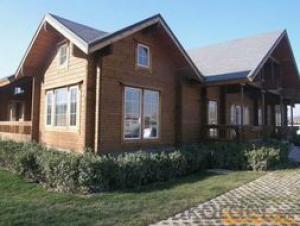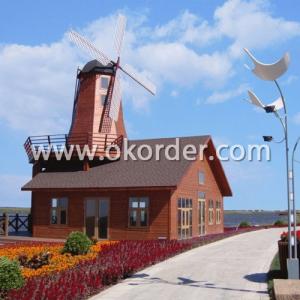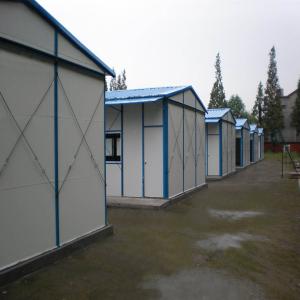wooden house
- Loading Port:
- China Main Port
- Payment Terms:
- TT OR LC
- Min Order Qty:
- -
- Supply Capability:
- -
OKorder Service Pledge
Quality Product, Order Online Tracking, Timely Delivery
OKorder Financial Service
Credit Rating, Credit Services, Credit Purchasing
You Might Also Like
wooden villa house
Benefits of factory built prefabricated houses and villas
| |
Very little maintenance | Reduce environmental pollution and save water |
Ease and speed of erection | Easily transportable |
Aesthetically pleasing | Buildings can be relocated |
Priced more economically than brick | Buildings can be designed by your choice
|
HOT!!!Economic Mobile house/prefab house
The most stand out point of the mobile house is low cost, short-term produce and prompt installation.
1,Structure is reliable: Light steel structure system is safe and reliable, satisfied modern architecture concept.
2,Easy assembly and disassembly: The house can be assembled and disassembled many times, used repeatedly. It just need simple tools to assemble. Each worker can assemble 20~30 square meters every day
3,Flexible layout: Door and window can be assembled in any position, partition wall panel can be assemble in any transverse axes sites.
4,Main material :C section steel and sandwich panel.
5,Application:Widly used in construction site,office building,dormitory, temporary school,termporary hospital etc.
- Q:How to build self-built villa?
- Second, apply for land to build land, it is best miscellaneous. Agricultural land to the first agricultural specia
- Q:Can container houses be designed with a minimalist interior?
- Certainly, minimalist interiors can be designed in container houses. The allure of container houses lies in their simplicity and adaptability, making them a perfect fit for the minimalist design philosophy. By employing clean lines, uncomplicated forms, and a limited color scheme, a minimalist aesthetic can be achieved within a container house. One crucial tenet of minimalism is the removal of clutter and unnecessary items, a task easily accomplished in the confined spaces of a container house. The compact nature of these dwellings encourages occupants to keep only essential items, resulting in a serene living environment devoid of clutter. When it comes to design elements, minimalism often prioritizes the use of natural materials like wood, concrete, or metal, which can be seamlessly integrated into the interior of a container house. These materials bring warmth and a timeless quality to the space while maintaining the clean and minimalist aesthetic. Another integral aspect of minimalist design is maximizing natural light and open spaces. Container houses effortlessly accommodate this principle with their large windows and open floor plans. The abundance of natural light not only creates an illusion of spaciousness but also enhances the overall minimalist ambiance. Lastly, functionality and practicality are paramount in minimalist design. Container houses are renowned for their efficient use of space and innovative storage solutions. By utilizing built-in storage units and multifunctional furniture, a minimalist interior can be achieved without compromising on functionality. In conclusion, container houses undeniably lend themselves to minimalist interiors. Their simplicity and versatility provide an ideal foundation for a clutter-free, serene, and practical living space that embodies the principles of minimalism.
- Q:Can container houses be designed with a community kitchen or dining area?
- Certainly, container houses have the potential to incorporate a community kitchen or dining area into their design. Although container houses are typically associated with limited living spaces, they can be altered and personalized to cater to a variety of preferences and needs, including communal areas. By using open floor plans, container houses can be created to feature a shared space that includes a community kitchen or dining area. This can be achieved either by combining multiple containers or by removing specific walls and partitions to establish a more expansive area. Regarding the kitchen, container houses can be equipped with all the essential appliances and amenities, such as stoves, ovens, refrigerators, and sinks. The kitchen area can be designed to accommodate multiple individuals simultaneously cooking or preparing food. Moreover, communal dining spaces can be integrated into the container house design, providing an area for residents to gather and enjoy meals together. It is important to consider that the design and layout of a container house with a community kitchen or dining area will depend on the specific preferences and requirements of the residents. Factors such as available space, budget, and desired level of privacy will influence the final design. However, with adequate planning and customization, container houses can certainly facilitate communal living arrangements and promote a sense of community among residents.
- Q:Can container houses be designed with sustainable materials?
- Yes, container houses can certainly be designed with sustainable materials. Sustainable materials such as reclaimed wood, bamboo, recycled steel, and non-toxic insulation can be used to construct container houses. Additionally, energy-efficient appliances, solar panels, rainwater harvesting systems, and other environmentally friendly features can be incorporated into the design to further enhance the sustainability of container houses.
- Q:Are container houses suitable for senior living communities?
- Yes, container houses can be suitable for senior living communities. There are several reasons why container houses can be a viable option for senior living communities. Firstly, container houses are highly customizable and can be designed to meet the specific needs of senior citizens. They can easily be modified to include features such as wider doorways, ramps, and grab bars to ensure better accessibility for seniors with mobility issues. Additionally, the layout of container houses can be adapted to accommodate medical equipment such as wheelchairs and walkers. Secondly, container houses offer a cost-effective solution for senior living communities. They are often more affordable than traditional housing options, making them an attractive choice for seniors on a fixed income. The construction and maintenance costs of container houses are generally lower than those of conventional homes, making them a more financially sustainable option for senior living communities. Furthermore, container houses are environmentally friendly. As they are made from repurposed shipping containers, they contribute to reducing waste and have a smaller carbon footprint compared to traditional housing. This aligns with the growing trend of sustainable living, which is gaining popularity among seniors as well. In addition to these practical benefits, container houses can foster a sense of community among seniors. The compact nature of container houses allows for closer proximity between neighbors, promoting social interactions and a stronger support network. This is crucial for seniors who may be at risk of isolation or loneliness. However, it is important to note that the suitability of container houses for senior living communities may also depend on the specific needs and preferences of the seniors in question. Some seniors may prefer the familiarity and aesthetics of traditional housing, while others may have specific health or care requirements that container houses may not be able to meet. Therefore, it is essential to consider the individual needs and preferences of seniors before deciding whether container houses are suitable for a particular senior living community.
- Q:Are container houses suitable for elderly individuals?
- Yes, container houses can be suitable for elderly individuals. Container houses can be designed with accessibility features such as ramps, wider doorways, and grab bars to accommodate the mobility needs of elderly individuals. Additionally, container houses can be modified to include single-level layouts to avoid the need for stairs. With proper modifications and considerations, container houses can provide a comfortable and convenient living space for elderly individuals.
- Q:Are container houses suitable for recreational or vacation rentals?
- Yes, container houses can be suitable for recreational or vacation rentals. They are versatile, cost-effective, and can be easily customized to provide comfortable accommodations. Container houses can offer a unique and eco-friendly experience for vacationers, and their portable nature allows for flexibility in location. Additionally, their sturdy construction and durability make them suitable for withstanding various weather conditions, ensuring a safe and enjoyable stay for guests.
- Q:Can container houses be built with a home library or reading nook?
- Yes, container houses can definitely be built with a home library or reading nook. The versatility of container structures allows for customization and creative interior designs. By incorporating shelves, comfortable seating, and cozy lighting, container houses can easily accommodate a dedicated space for reading and storing books.
- Q:Are container houses suitable for outdoor enthusiasts or nature lovers?
- Yes, container houses are suitable for outdoor enthusiasts or nature lovers. Container houses can be designed to blend seamlessly with their surroundings, and their modular nature allows for easy customization and integration into natural landscapes. Furthermore, container houses can be equipped with various eco-friendly features such as solar panels and rainwater harvesting systems, making them a sustainable choice for those who value the environment. Additionally, container houses can be easily transported to remote locations, allowing outdoor enthusiasts to enjoy their favorite outdoor activities in the midst of nature.
- Q:Are container houses safe during earthquakes?
- Yes, container houses can be safe during earthquakes if they are properly designed and constructed with seismic-resistant features. These features include reinforced foundations, flexible connections, and bracing systems that can absorb and dissipate seismic energy. Additionally, the use of appropriate materials and adherence to building codes and regulations can enhance the safety of container houses during earthquakes.
1. Manufacturer Overview |
|
|---|---|
| Location | |
| Year Established | |
| Annual Output Value | |
| Main Markets | |
| Company Certifications | |
2. Manufacturer Certificates |
|
|---|---|
| a) Certification Name | |
| Range | |
| Reference | |
| Validity Period | |
3. Manufacturer Capability |
|
|---|---|
| a)Trade Capacity | |
| Nearest Port | |
| Export Percentage | |
| No.of Employees in Trade Department | |
| Language Spoken: | |
| b)Factory Information | |
| Factory Size: | |
| No. of Production Lines | |
| Contract Manufacturing | |
| Product Price Range | |
Send your message to us
wooden house
- Loading Port:
- China Main Port
- Payment Terms:
- TT OR LC
- Min Order Qty:
- -
- Supply Capability:
- -
OKorder Service Pledge
Quality Product, Order Online Tracking, Timely Delivery
OKorder Financial Service
Credit Rating, Credit Services, Credit Purchasing
Similar products
New products
Hot products
Hot Searches
Related keywords



























